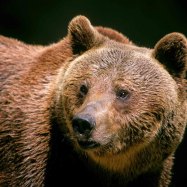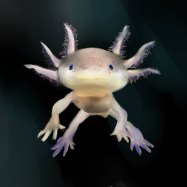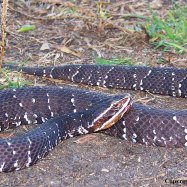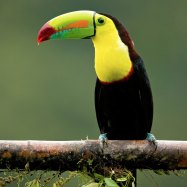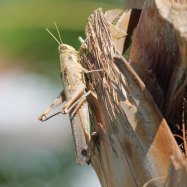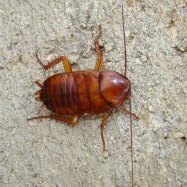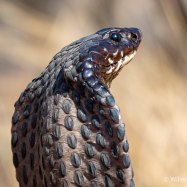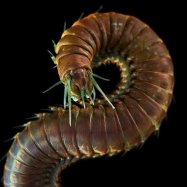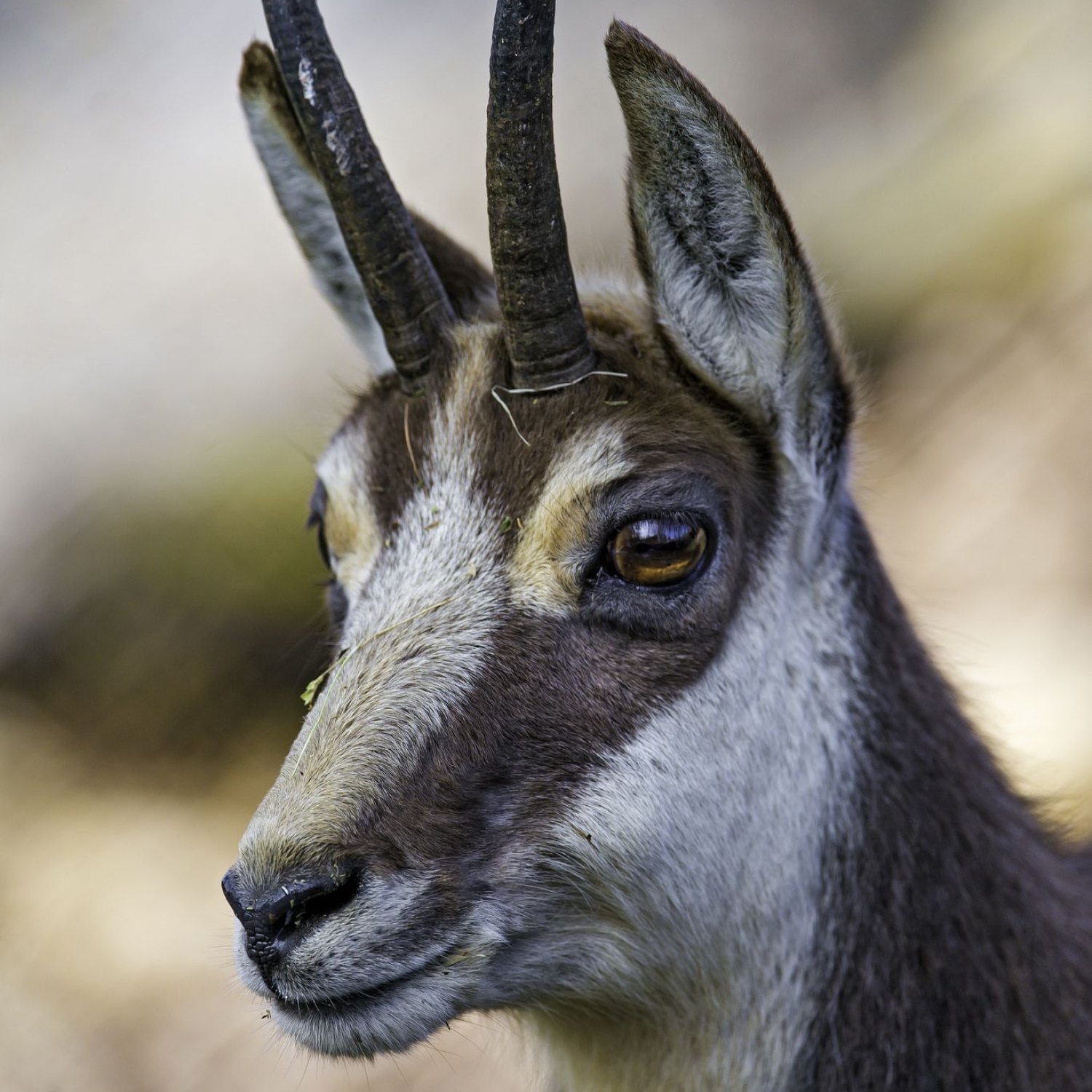
Chamois
110-150 cm
Meet the chamois, a creature of the mountains! This agile animal is a member of the bovidae family and can be found in the Alps, Pyrenees, Carpathians, Apennines, and other European mountain ranges. With a compact body shape and measuring 110-150 cm in length, the chamois is well-adapted to its rocky and steep surroundings. Learn more about this fascinating animal and its habitat today! #chamois #mountainanimal #bovidae #europeanmountains
Animal Details Summary:
Common Name: Chamois
Kingdom: Animalia
Habitat: Mountainous regions
A Closer Look at the Chamois: Europe's Mountain Goat
The mountains of Europe are home to a beautiful and fascinating animal known as the chamois. This bovid, scientifically named Rupicapra rupicapra, is commonly called the chamois and is found in various countries across Europe. With its impressive agility, unique coloration, and intriguing behavior, the chamois has captured the hearts of many nature lovers. In this article, we will delve into the physical and behavioral characteristics of this remarkable animal, as well as its role in the ecosystem and conservation efforts Chamois.Animal Classification and Habitat
The chamois belongs to the kingdom Animalia, the phylum Chordata, and the class Mammalia. Its order is Artiodactyla, which means "even-toed hoofed animals," and its family is Bovidae, the same family as cows, goats, and sheep. As the chamois is a mountain-dwelling animal, it is most commonly found in the habitat of mountainous regions. This includes areas such as the Alps, Pyrenees, Carpathians, Apennines, and other mountain ranges in Europe.Diet and Feeding Behavior
The chamois is a herbivorous animal, mainly feeding on grasses, herbs, leaves, and shrubs. Due to their adept climbing abilities, they are able to access vegetation in high and steep areas that other animals cannot reach. During the summer, the chamois will forage in higher elevations, but as winter approaches, they will move to lower areas to find food. This strategy allows them to avoid harsh winter conditions in the mountains, where food is scarce.Geographical Distribution and Country of Origin
The chamois is native to various countries in Europe, where it can be found in the wild Cecropia Moth. Some of the countries that are home to this magnificent animal include Austria, France, Germany, Italy, Slovenia, Switzerland, and many others. Although they are distributed across multiple countries, their overall population is not evenly spread out. This is due to factors such as habitat loss and hunting, which will be discussed later in the article.Physical Appearance and Coloration
The chamois is a compact and agile animal, with a body shape and size similar to that of a goat. They have slender legs, a long tail, and distinctive facial features such as large eyes and small, pointed ears. Their winter coat is brown-gray, providing excellent camouflage in snowy environments, while their summer coat is reddish-brown. This seasonal change in coloration is known as molting and is crucial for the chamois to survive in different weather conditions.Impressive Physical Capabilities
Aside from their unique coloration, the chamois possesses impressive physical abilities that allow them to thrive in mountainous environments. They have excellent balance and can navigate rocky slopes and uneven terrain with ease. Their hooves have hard edges and special grooves, providing them with a strong grip and stability on steep surfaces. This enables them to climb and leap effortlessly, often reaching heights of up to 2 meters. These abilities are vital for escaping from predators and finding food in tough terrain.Role in the Ecosystem
The chamois plays a crucial role in the ecosystem of its habitat. As a herbivorous animal, it helps regulate plant growth and vegetation levels, ensuring a balanced and healthy ecosystem. They also serve as prey for predators such as lynxes, wolves, and eagles, maintaining a balance in the food chain. Additionally, their hooves help to scatter plant seeds, contributing to the growth and diversity of plant life in the mountains.Conservation Efforts
Despite their important role in the ecosystem, the chamois is facing threats to its survival. Habitat loss and fragmentation due to human activities, such as infrastructure development and agriculture, are significant challenges that the chamois must overcome. In addition, hunting for their meat and trophy hunting have also contributed to declining chamois populations in some areas. However, several conservation efforts have been put in place to protect this animal and its habitat. These include habitat restoration, population monitoring, and the banning of hunting in certain areas.In addition to these efforts, research and education are instrumental in raising awareness about the importance of chamois conservation. Organizations such as the International Union for Conservation of Nature (IUCN) have listed the chamois as a species of "least concern," meaning that they do not face immediate threat of extinction. However, continued monitoring and conservation efforts are essential to ensure that this remains the case.
In Conclusion
The chamois is a unique and fascinating animal that calls the mountains of Europe home. Its remarkable physical abilities, seasonal coloration, and important role in the ecosystem make it a truly captivating species. However, like many other creatures, the chamois is facing challenges that threaten its survival. We must continue to educate ourselves and support conservation efforts to ensure that this beautiful animal will continue to roam the mountains for generations to come.

Chamois
Animal Details Chamois - Scientific Name: Rupicapra rupicapra
- Category: Animals C
- Scientific Name: Rupicapra rupicapra
- Common Name: Chamois
- Kingdom: Animalia
- Phylum: Chordata
- Class: Mammalia
- Order: Artiodactyla
- Family: Bovidae
- Habitat: Mountainous regions
- Feeding Method: Herbivorous
- Geographical Distribution: Europe
- Country of Origin: Various countries in Europe
- Location: Alps, Pyrenees, Carpathians, Apennines, and other mountain ranges in Europe
- Animal Coloration: Winter coat is brown-gray, summer coat is reddish-brown
- Body Shape: Compact and agile
- Length: 110-150 cm
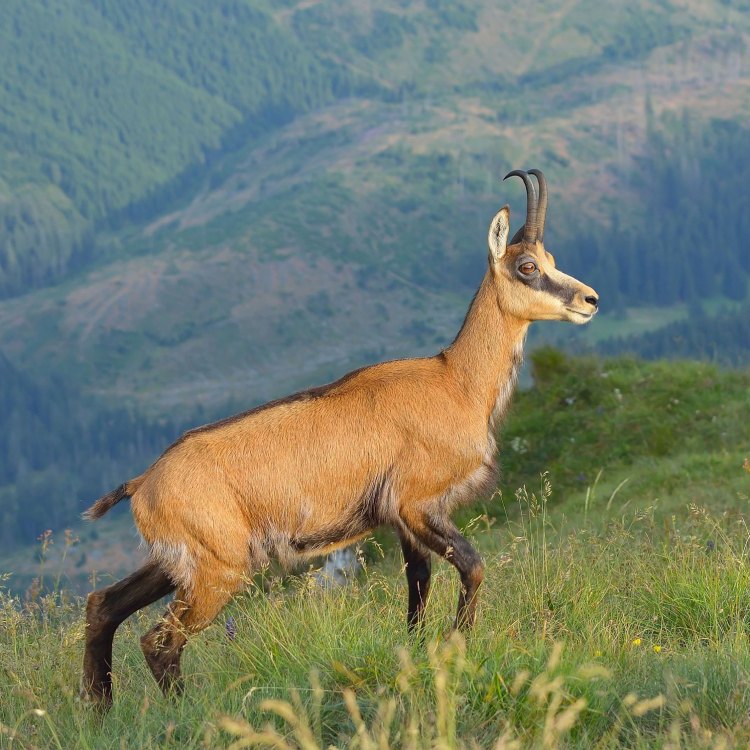
Chamois
- Adult Size: Height at shoulders: 70-80 cm; Weight: 30-60 kg
- Average Lifespan: 10-15 years
- Reproduction: Sexual
- Reproductive Behavior: Polygynous
- Sound or Call: Whistles and grunts
- Migration Pattern: Altitudinal migration
- Social Groups: Mixed-sex herds in summer, segregated by sex in winter
- Behavior: Diurnal and gregarious
- Threats: Hunting, habitat loss, and climate change
- Conservation Status: Least Concern
- Impact on Ecosystem: Important prey species
- Human Use: Hunting for sport and meat, tourism
- Distinctive Features: Curved horns and distinctive facial markings
- Interesting Facts: Chamois are excellent climbers and can run at high speeds in rocky terrains. They have a soft inner coat underneath their coarse outer coat to insulate them from cold temperatures.
- Predator: Golden eagle, lynx, and wolves
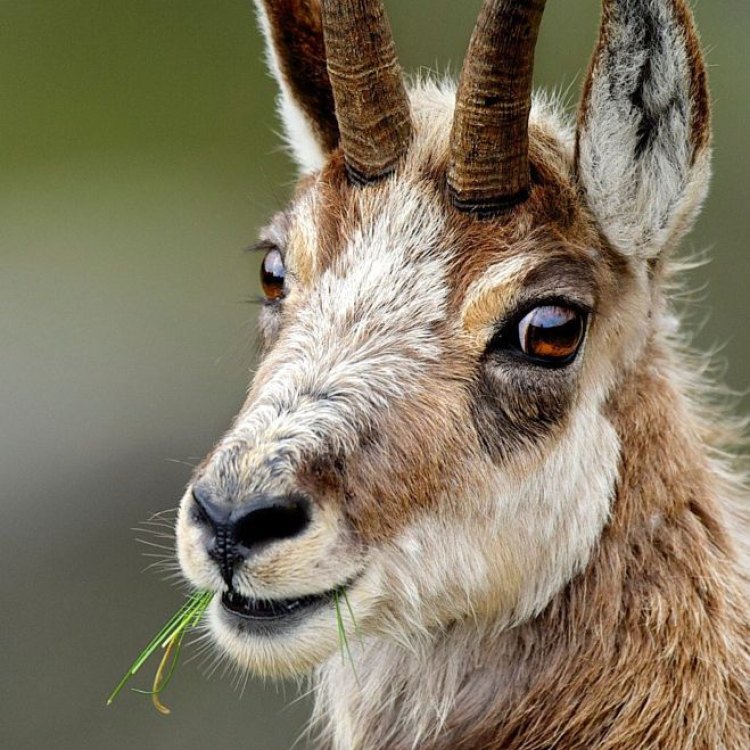
Rupicapra rupicapra
The Curious and Capable Chamois: Discovering the Unique Habits and Traits of This Alpine Antelope
Nestled in the majestic mountains of Europe, you may catch a glimpse of a nimble and agile creature swiftly navigating the treacherous rocky terrains. This is the charming chamois, a species of alpine antelope that has captured the hearts of many with its distinctive features and fascinating behavior.With its scientific name Rupicapra rupicapra, the chamois belongs to the same family as goats, cattle, and sheep. However, its unique characteristics set it apart from its domesticated cousins PeaceOfAnimals.Com. In this article, we will delve deeper into the world of chamois, exploring its biology, behavior, role in the ecosystem, and the threats it faces in the modern world.
The Basics: Size, Lifespan, and Reproduction
The chamois is a medium-sized mammal, measuring approximately 70-80 cm in height at the shoulders and weighing between 30-60 kg. They have short, coarse coats that range in color from reddish-brown to grayish-brown, blending perfectly with the rocky environments they inhabit.These antelopes have an average lifespan of 10-15 years, with some individuals living up to 20 years in captivity. They reach sexual maturity at 2-3 years of age and reproduce sexually. During the breeding season, which occurs between October and November, males compete for the attention of females through displays of dominance and courtship rituals.
Reproductive Behavior: Polygynous and Social Groups
Chamois are polygynous animals, meaning that a dominant male will mate with multiple females within his territory. These territories cover an average of 25-50 hectares and are fiercely protected by the males, who mark their boundaries with scent markings and urine.During the summer months, chamois form mixed-sex herds, with one dominant male, known as the 'master buck,' leading the group Central Ranges Taipan. However, as the harsh winter sets in, the herds split into segregated groups of males and females, with females taking care of their young and males moving to higher elevations.
Behavior: Active and Gregarious
Chamois are diurnal animals, meaning they are most active during the day and rest at night. They are also gregarious, preferring to live in groups and engage in social interactions. These interactions include playful sparring between males as a way to establish dominance and grooming between females to strengthen social bonds.One of the most interesting behavioral traits of chamois is their migration pattern. As the seasons change, they move from higher elevations in the summer to lower altitudes in the winter, following the availability of food and water sources.
Distinctive Features: Curved Horns and Face Markings
One cannot mistake the chamois for any other animal due to its unique and striking features. The most prominent of these features are their curved horns, characteristic of the Rupicapra genus. Both males and females have these horns, which can grow up to 20 cm in length, but males' horns are thicker and more curved.Another feature that sets the chamois apart is their distinctive facial markings. They have a black stripe running from the corner of their eyes to the nose, resembling a smile. This feature, along with their short black tail, makes them easily recognizable even from a distance.
Interesting Facts: Swift Climbers and Soft Insulators
Chamois are excellent climbers, equipped with unique anatomical adaptations for their vertical lifestyle. They have flexible hooves with rubber-like pads that provide them with a firm grip on rocky surfaces, enabling them to navigate steep slopes and dangerous cliffs with ease.Additionally, they can run at high speeds of up to 50 km/hour, enabling them to escape predators and move swiftly to forage for food. Interestingly, chamois also have a soft inner coat that acts as an insulator, keeping them warm in the harsh alpine climates. This double-layered coat is what makes their wool highly sought after for sweaters and coats.
Role in the Ecosystem: An Important Prey and Indicator Species
The rocky terrain that is home to chamois is not an easy place for predators to hunt. However, golden eagles, lynx, and wolves are the primary predators of chamois. Their presence in the ecosystem is essential, as they provide a food source for these predators and play a crucial role in maintaining a balanced food chain.Chamois are also considered indicator species, meaning their presence or absence is an indicator of the overall health of the ecosystem. As their population declines, it is a sign of potential threats and imbalances in the ecosystem that need to be addressed.
Threats and Conservation Efforts
Despite their important role in the ecosystem, chamois face numerous threats in the modern world. Habitat loss due to human activities such as mining, logging, and infrastructure development is a significant issue, as it reduces the available grazing and breeding grounds for these animals.Chamois are also hunted for sport and their meat, with trophy hunting being legal in some regions. The increasing demand for their wool and the rise of the fashion industry has also led to illegal poaching and trapping of these animals.
To protect the species, several conservation efforts are in place. The IUCN Red List, which assesses the conservation status of species, categorizes the chamois as least concern. However, this does not mean that they are not under threat.
Efforts such as regulating hunting and enforcing protected areas have been implemented to conserve chamois populations. Organizations like the World Wildlife Fund also work towards preserving their habitat and raising awareness of the importance of these animals in the ecosystem.
Human Use: Hunting and Tourism
Humans have had a long history of using chamois for various purposes. In the past, they were hunted for their meat, fur, and antlers. Today, hunting for sport and their wool is still prevalent in some areas, while others have banned hunting to protect the species.Tourism has also played a significant role in chamois conservation. Many people travel to alpine regions to catch a glimpse of these magnificent animals in their natural habitat. This has led to the development of ecotourism initiatives, where tourists can observe chamois from a safe distance and contribute to their conservation efforts.
In Conclusion
The chamois may be a small and unassuming animal, but its remarkable resilience and unique features make it a crucial part of the alpine ecosystem. As we continue to learn more about these creatures, it is essential to recognize the importance of preserving their habitats and protecting them from human-induced threats.By understanding the distinctive behaviors and traits of the chamois, we can appreciate and value these animals as an important part of our natural world. Let us work together to ensure that this brave and agile alpine antelope continues to thrive in its mountain home for generations to come.
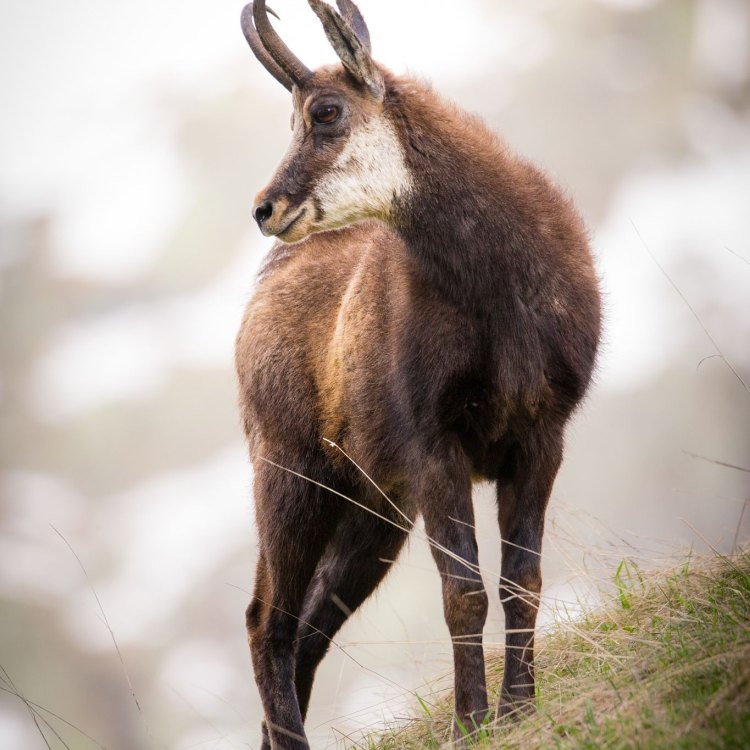
A Closer Look at the Chamois: Europe's Mountain Goat
Disclaimer: The content provided is for informational purposes only. We cannot guarantee the accuracy of the information on this page 100%. All information provided here may change without prior notice.




